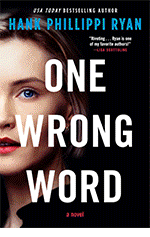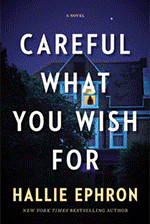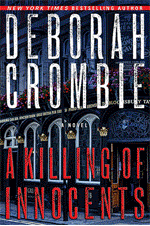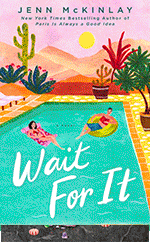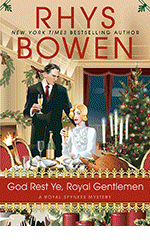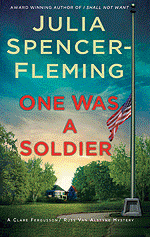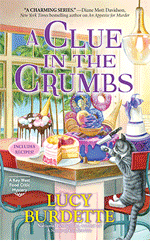HALLIE EPHRON: Today I'm posing a wonky writing question.
Mystery writers write genre fiction. Genre. Which means there are a ton of expectations we need to meet or address. And two of them have always seemed to me to be in conflict with one another.
#1: Play fair with the reader.
This translates to: whatever the narrator knows, the reader should also know. If the narrator sees something, the reader should "see" it, too.
In other words, it's not kosher for the narrator to say, "I couldn't believe what I saw!" or "There, in the corner, I saw something that made me realize what was going on." And then not, right then and there, when the narrator has the realization, reveal it to the reader.
The reasoning here is that readers want a fair crack at solving the mystery along with the sleuth. They don’t want to feel cheated because the sleuth hid key clues.
#2: Create suspense by posing unanswered questions and delaying the answer.
This can involve saying something like, "I couldn't believe what I saw!" and then waiting three more chapters before revealing what that seen thing was.
The reasoning here is that suspense will keep reading. Turning those pages. Looking for the answers to those unanswered questions.
So I feel that push/pull when I'm structuring my tale: how to create suspense by posing unanswered questions and delaying the answer, on the one hand, and playing fair with the reader on the other?
So todays queston: How have you reconciled those competing goals to create a page turner? Or do you you just ignore both "rules" and let the chips fall?
DEBORAH CROMBIE: What a tough question, Hallie! I think I'm cheating a little bit because I write in third person with multiple viewpoints, so sometimes the reader may know things that my detectives don't.
But I absolutely play fair–my detectives never make a big discovery that the reader doesn't learn, too. I think scene and chapter breaks as the characters are ABOUT to learn something go a long way towards creating tension, but no cheating by keeping that information a secret allowed.
JULIA SPENCER-FLEMING: When I teach my seminar on suspense, one of the works I reference is, believe it or not, Cinderella.
Everyone knows the story, and it points out the underlying basics of suspense: the reader needs to CARE about the character and the character’s goal needs to be desperately important to them. (I could go into a whole ‘nother seminar on why caring is different from liking, but I’ll save it for another day.)
I don’t think the suspense is in “I can’t believe what I saw,” because the answer to “what did the sleuth see?” should immediately lead to another question, or another obstacle blocking the sleuth from racing their goal.
An amazing example of this is K.J. Erickson’s THE LAST WITNESS, where the detective knows the victim’s husband murdered her. But he doesn’t know how and he can’t find the body. It’s a great example of the suspense coming from the character’s goal, not the solution to the murder.
HANK PHILLIPPI RYAN: I think suspense is the way authors can use time. We have control over whether time passes quickly or slowly, and can play with that to tease out suspense.
In my classes, I teach suspense with—-Baseball! It’s the bottom of the ninth, tie game, two outs, bases loaded, and the guy comes to the bat.
The ballpark is full. But! Half the people are rooting passionately for the batter to score–and the other half is rooting just as passionately for him to fail. Two groups rooting passionately for the OPPOSITE outcome! ANd it’s good guys and bad guys, depending on where you sit. It’s the highest moment of the highest stakes in baseball. We all hold our breath. WHAT will happen? In seconds we will be cheering or devastated. And the batter will be running! Or slinking back to the dugout.
But it’s the moment BETWEEN that’s the jewel of suspense. The moment before the pitch and the swing. In real life, it’s an instant. But in a book, in that intense moment of the book’s real life, the author can pause. Put the action on hold. And, depending on POV, tease that moment out while the reader is holding a hope in their minds. And then boom, come back to it.
And yes ,as a result, it’s all about motivation. What does someone want, and how far will they go to get it? Will they get it? What will happen if they fail? That’s suspense.
JENN McKINLAY: I’m a let the chips fall sort of writer. I always leave a trail back to the killer but I throw in a lot of misdirection.
I write in first or third but only one point of view so the reader is the sleuth and learns everything the sleuth does. There are no “I can’t believe what I just saw” moments as I feel that’s unfair!
RHYS BOWEN: it’s all a question of who do we trust, isn’t it? Who is good and who is bad.
I do like to play fair with the reader. Writing mysteries mainly in the first person we learn clues at the same time as the sleuth. But this is also useful for suspense if the reader puts two and two together quicker than the sleuth. She goes into a house of a person we don’t think we can trust.
HALLIE: So, as a reader, does it drive you nuts when the writer plays fast and loose with the "play fair" rule. Do contrived "cliffhangers" drive you bananas? Or do you just let yourself go with the flow if everything else is working?
























.png)















